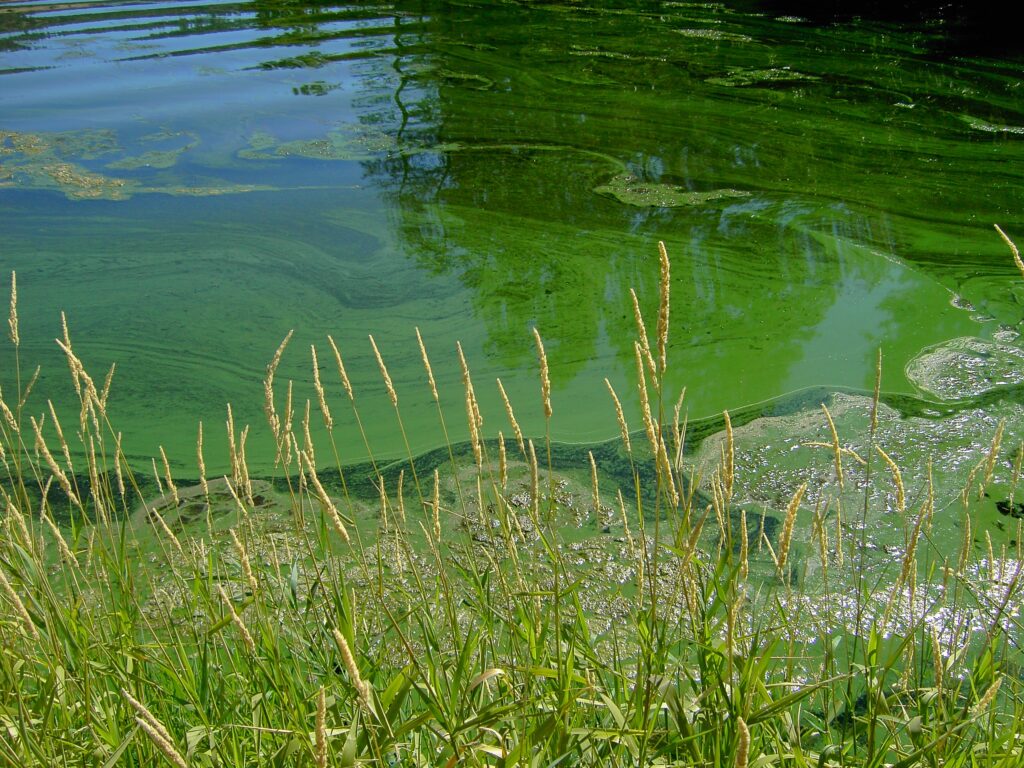Cyanobacteria blooms occur when blue-green algae rapidly grows out of control. (Courtesy of Lorraine Backer/Centers for Disease Control and Prevention public health image library)
The Idaho Department of Health and Welfare issued a health advisory for harmful algal blooms for the west side of American Falls Reservoir.
Recent reservoir samples showed high levels of cyanobacteria that produce cyanotoxins that can harm people, pets and livestock, the state agency announced in a news release Monday.
During the advisory, the Idaho Department of Health and Welfare advises people to be cautious while recreating near or in water in the area between the boat dock and Fairview — such as avoiding swimming, wading or contact with the water.
Under Health and Welfare’s advisory:
Children should not drink or contact reservoir water.
Pets and livestock shouldn’t drink the water, or go in it. If pets and livestock contact the water, immediately clean their skin, hide or fur with clean water.
Do not cook with or drink the water. Toxins aren’t removed by boiling or filtering the water, which can raise the risk of illness.
After handling fish or objects from the water, thoroughly wash hands in clean water. If you eat fish from the water, clean and wash it thoroughly in clean water. Before cooking, filet the fish and remove all internal organs, fat and skin. Cynaotoxins can build up in fish, Health and Welfare says, and human risk is unknown.
And watch for symptoms:
People who touch or swim in the water, or breath water droplets, might have a rash, hives, red eyes, wheezing, coughing or shortness of breath. People who swallow the water might have stomach pain, diarrhea or vomiting. People whose liver becomes damaged might have yellow skin and dark urine.
If you think you’re sick from cyanotoxin, contact your health care provider or call the poison center at 1-800-222-1222. You can also notify algae@deq.idaho.gov.
Within minutes to days after exposure to cyanotoxin, pets, livestock and wildlife can become sick or die. Dogs might get sick first, since they are more likely to swim in, drink or lick contaminated water or bloom material off their fur. If your pet or livestock seem sick after entering or drinking the water, immediately seek veterinary care.
Last week, the Idaho Department of Health and Welfare issued a health advisory for harmful algal blooms for the west side of Henry’s Lake, near eastern Idaho’s Island Park.
Cyanobacteria are natural to Idaho’s recreational water bodies. Rising temperatures can lead to blooms that release toxins into the water.
Blooms can look different — like mats, foam, spilled paint, or surface scum with a foul odor. And they might not always be visible, such as mats on the bottom of water.
GET THE MORNING HEADLINES.

